If you’ve ever wondered “what is dashi” and how to make it, look no further! In this ultimate guide, I’ll explain the different types of Japanese soup stock, ingredients used, and ways to cook with these umami-rich stocks in Japanese dishes.
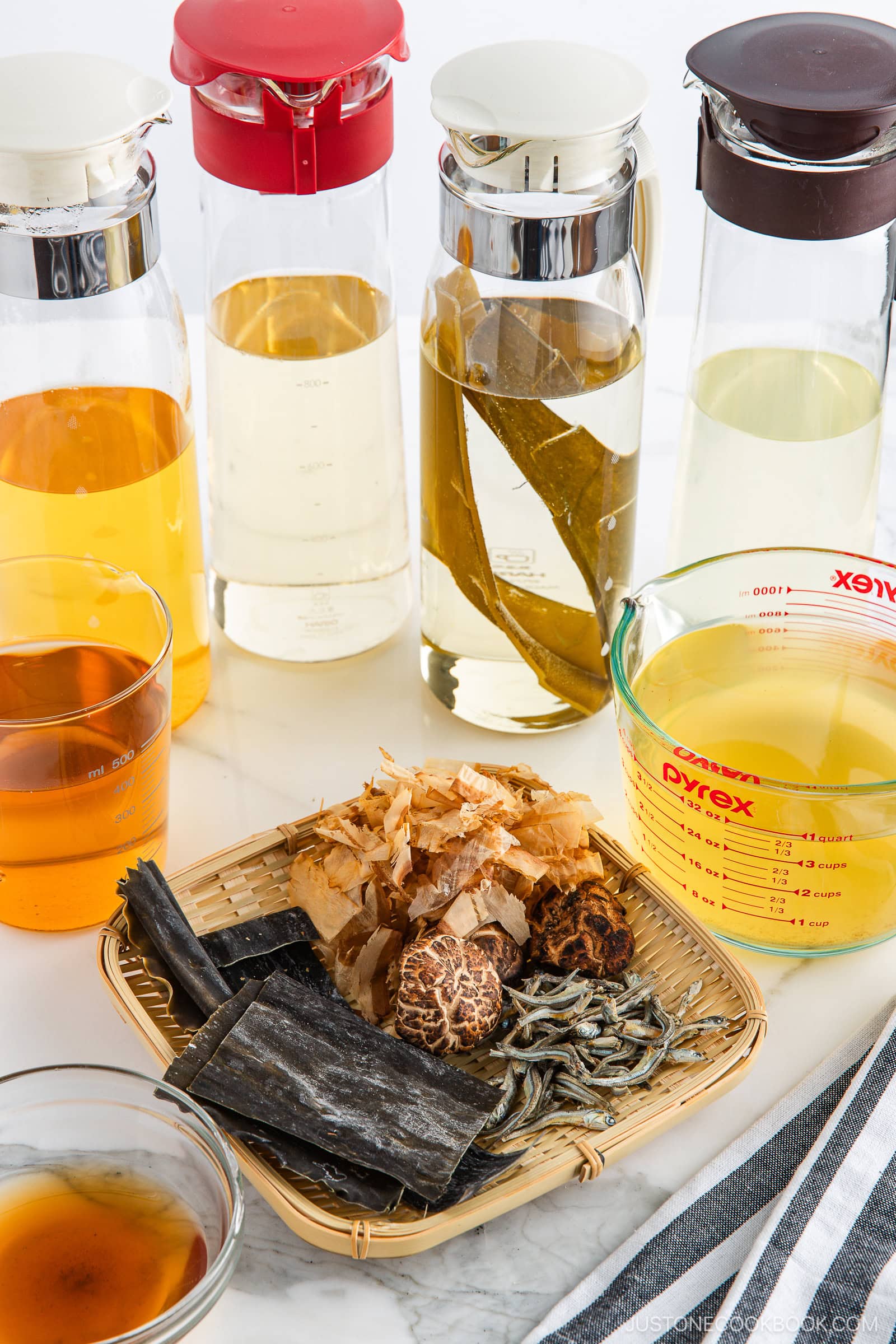
Dashi is a foundational ingredient in Japanese cuisine. In my guide What is Dashi and How to Make It, I’ll explain the several types of Japanese soup stock and how to make it from scratch. Then, start making easy Japanese recipes like Homemade Miso Soup and Udon Noodle Soup!
Table of Contents
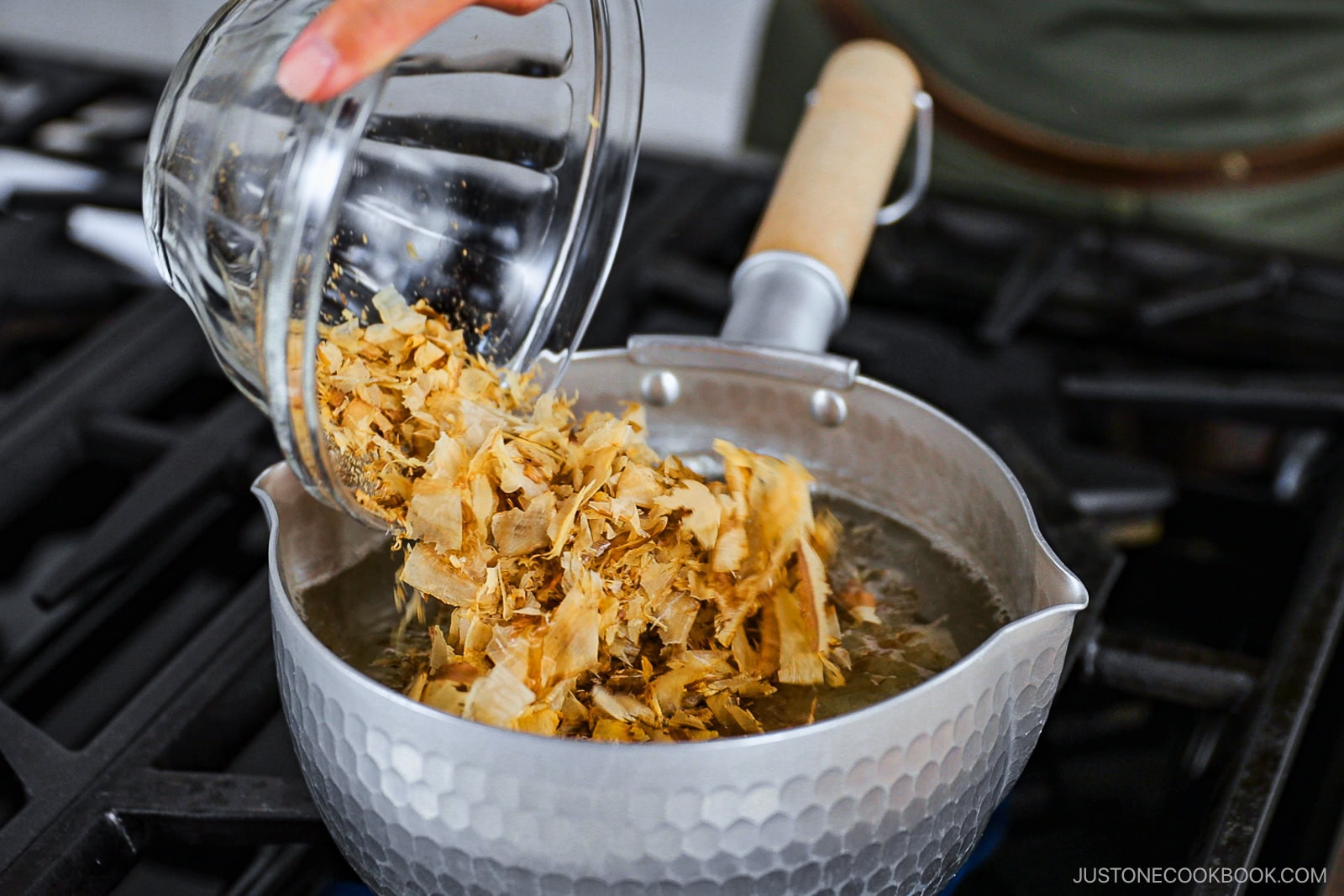
What is Dashi?
Dashi (だし, 出汁) or dashijiru (出し汁) is Japanese soup stock made from one or more ingredients like dried kelp, dried bonito flakes, dried shiitake mushrooms, and/or dried anchovies. They are naturally rich in glutamates that deliver intense flavor and give Japanese food its rich and deep umami taste. Its use in daily Japanese cooking traces back to 17th-century Japan.
Why I Love Dashi
- Simple ingredients, usually only one or two.
- Quick to make – It takes 20 minutes from scratch or 5 minutes with a packet.
- Layers of flavor – It’s crucial to many of my favorite dishes.
- A plant-based dashi option is available, making Japanese food accessible to all.
How to Use Japanese Soup Stock
- In soups like miso soup for an authentic umami flavor.
- As a broth base for Japanese hot pots, stews, simmered dishes, and noodle soup dishes.
- As seasoning for rolled omelette, mixed rice, or grilled octopus balls.
- In sauces for a touch of clear liquid that adds a savory depth and subtle aroma.
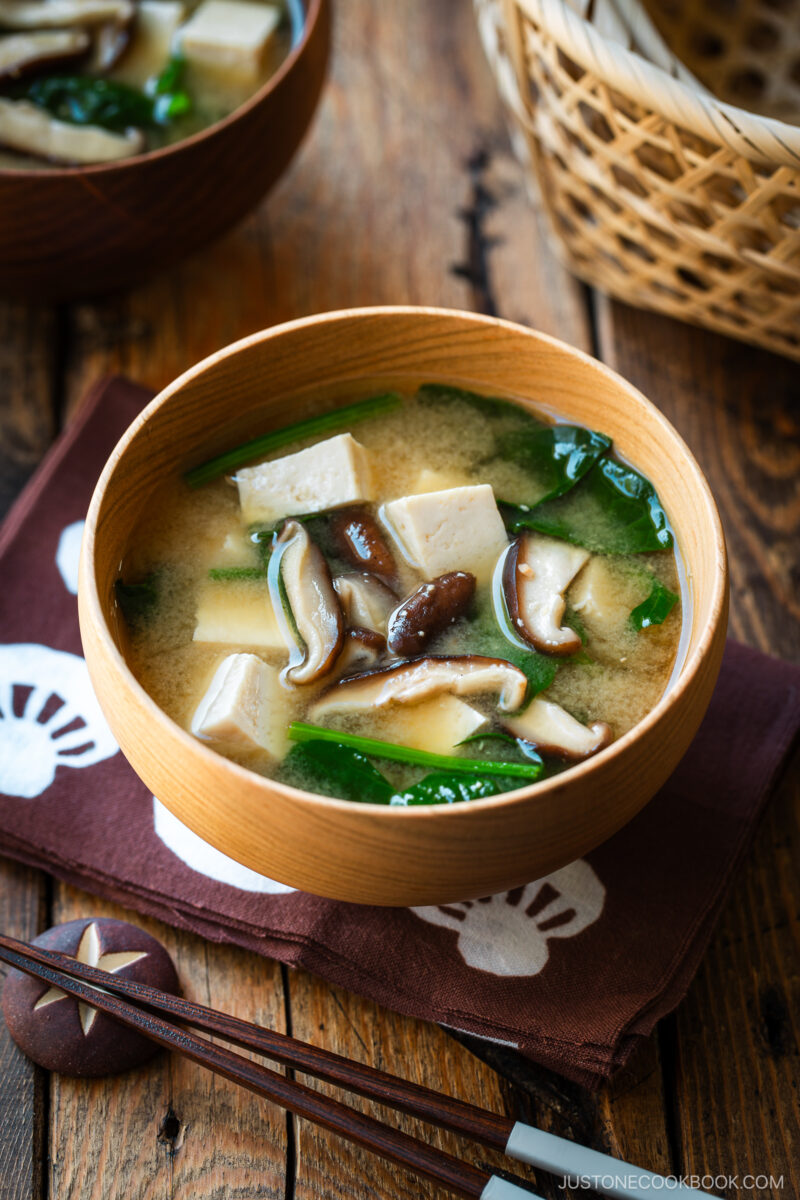
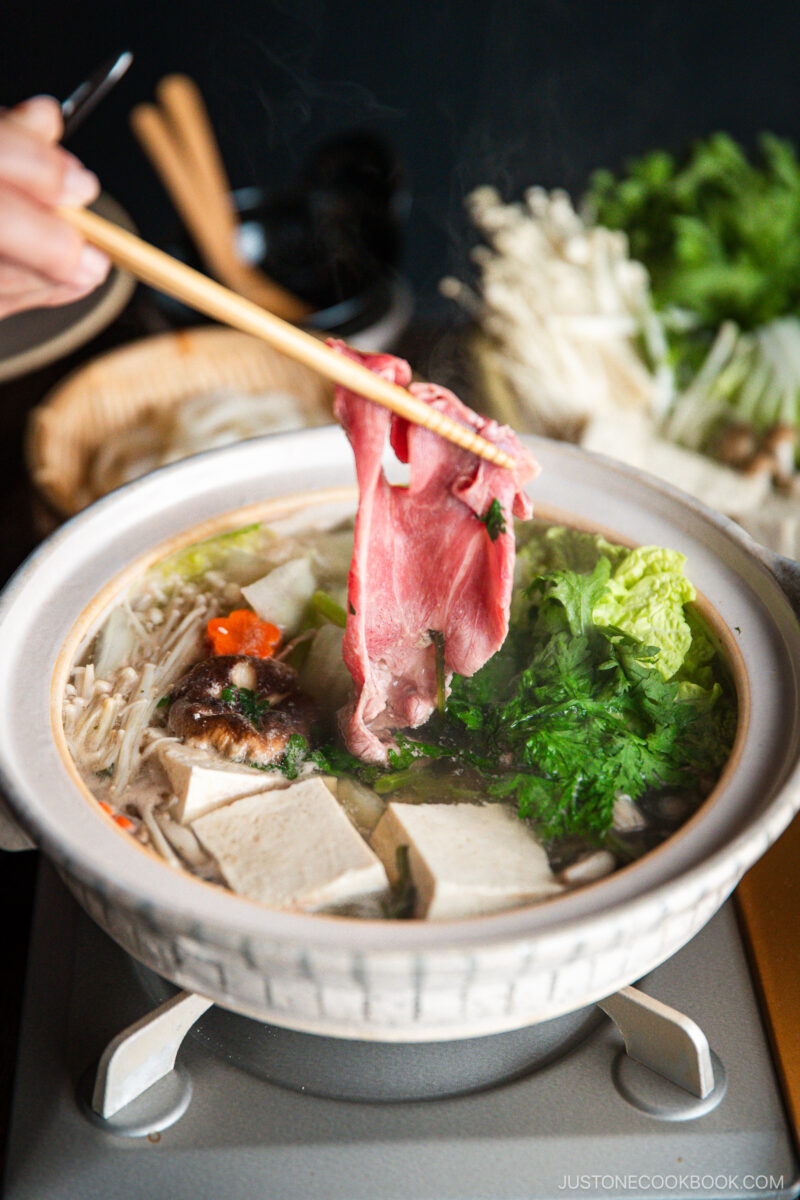
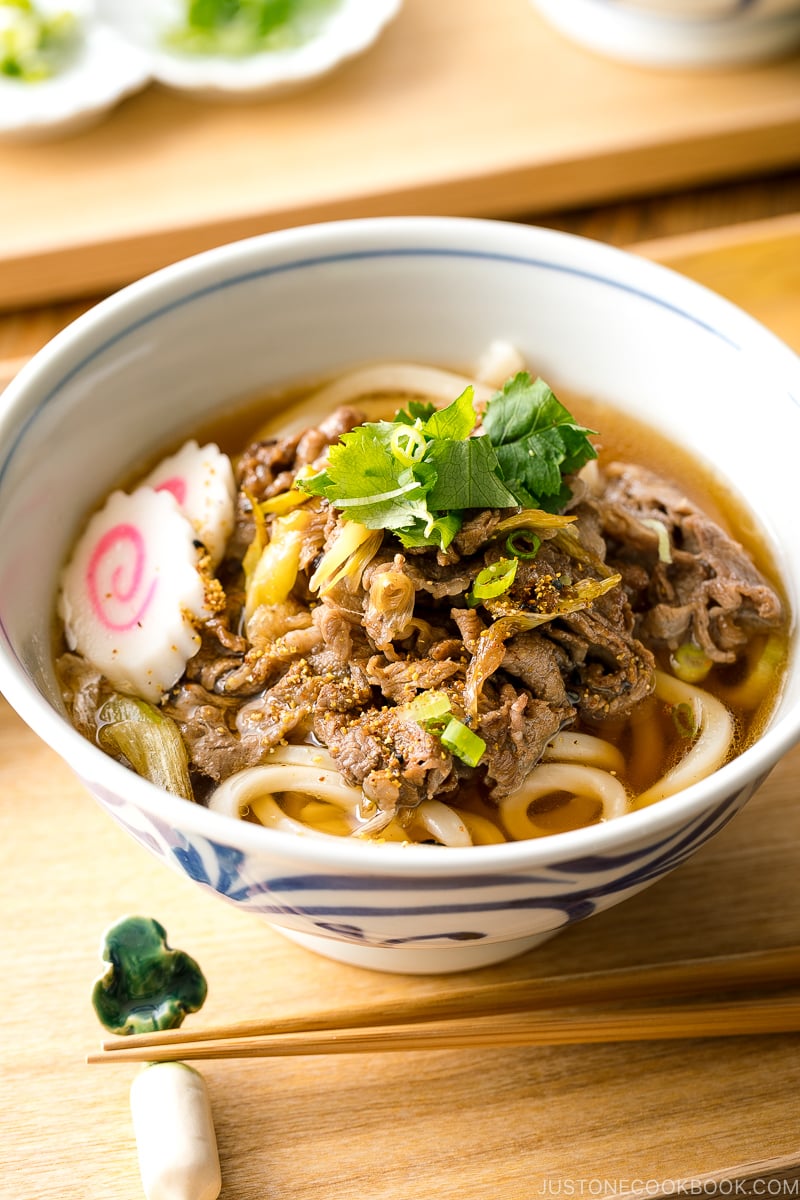
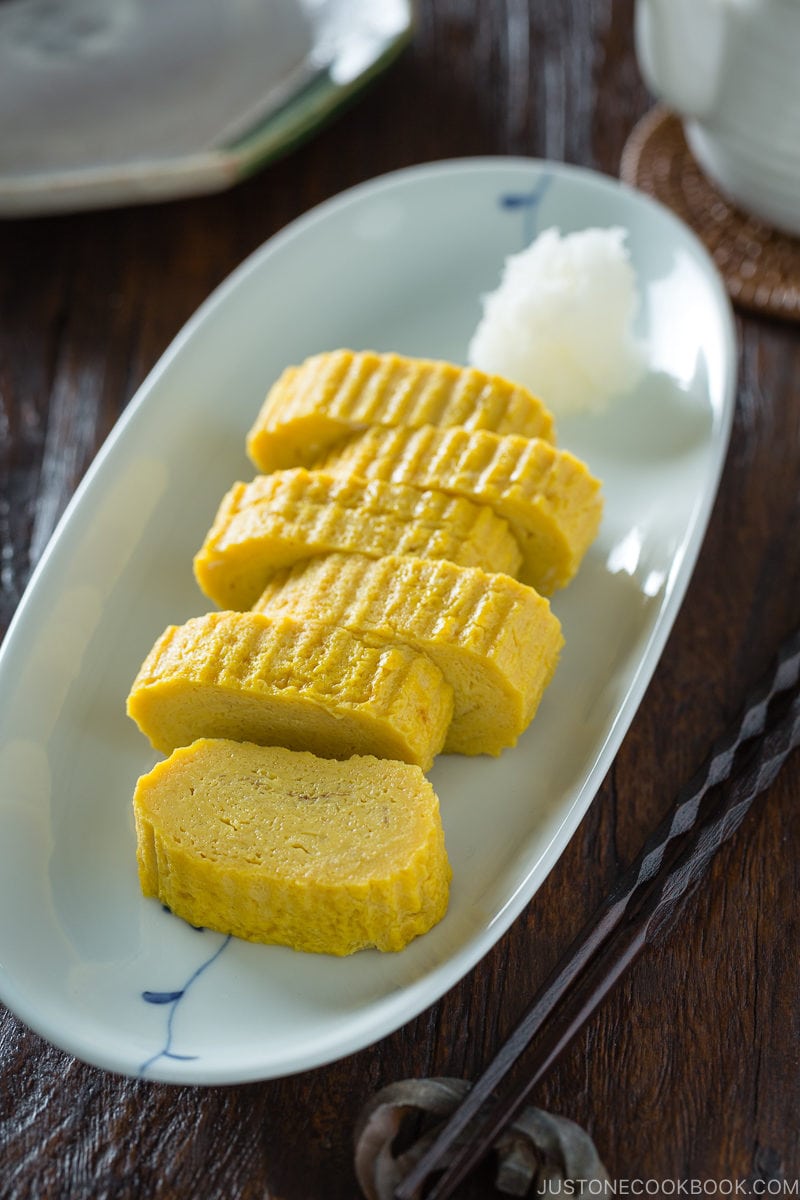
Ingredients for Dashi
- Kombu – dried kelp* (a kind of seaweed)
- Katsuobushi – dried and fermented skipjack tuna/bonito shaved into thin flakes
- Iriko or niboshi – dried anchovies/sardines
- Shiitake – dried shiitake mushrooms*
*vegan and vegetarian
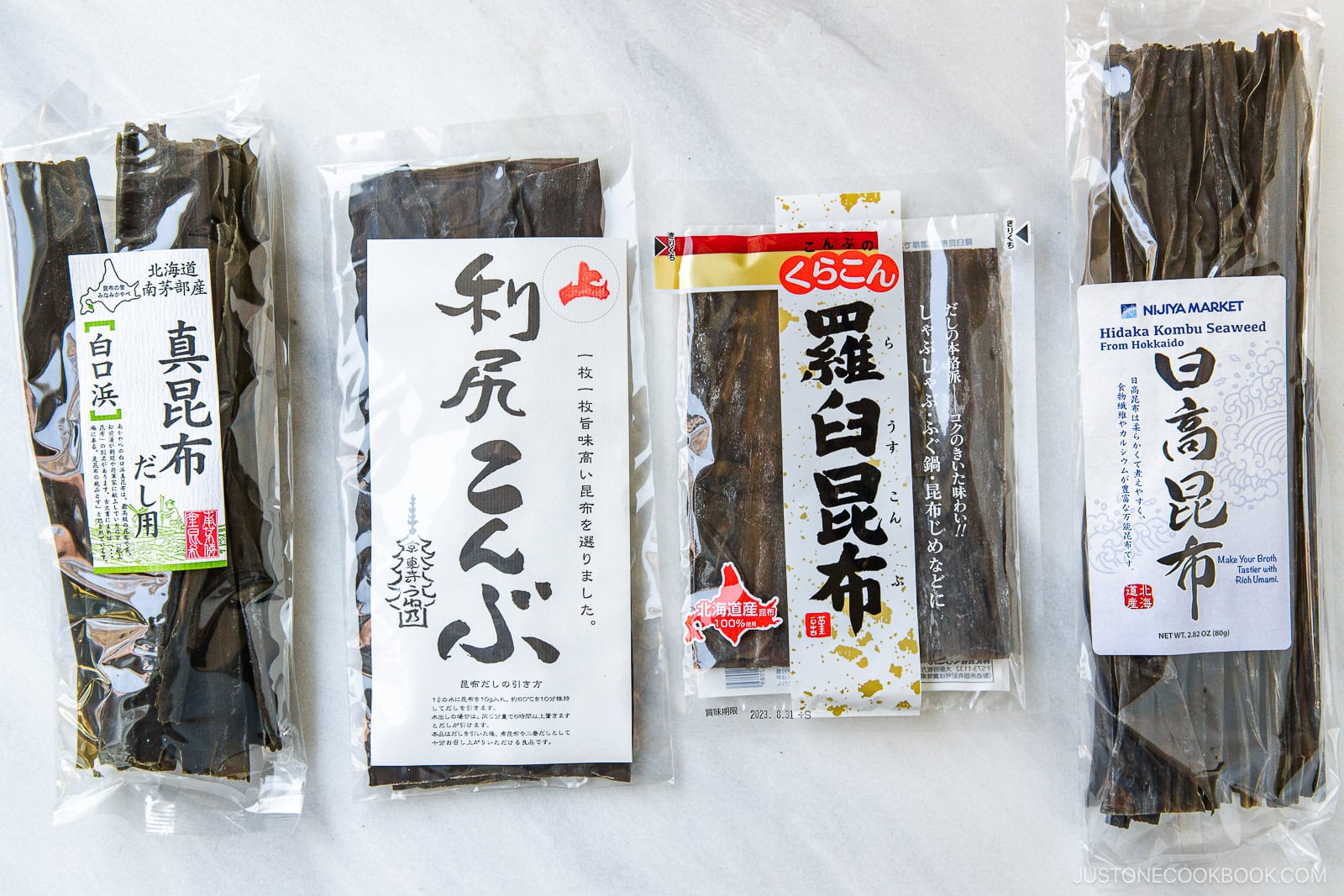
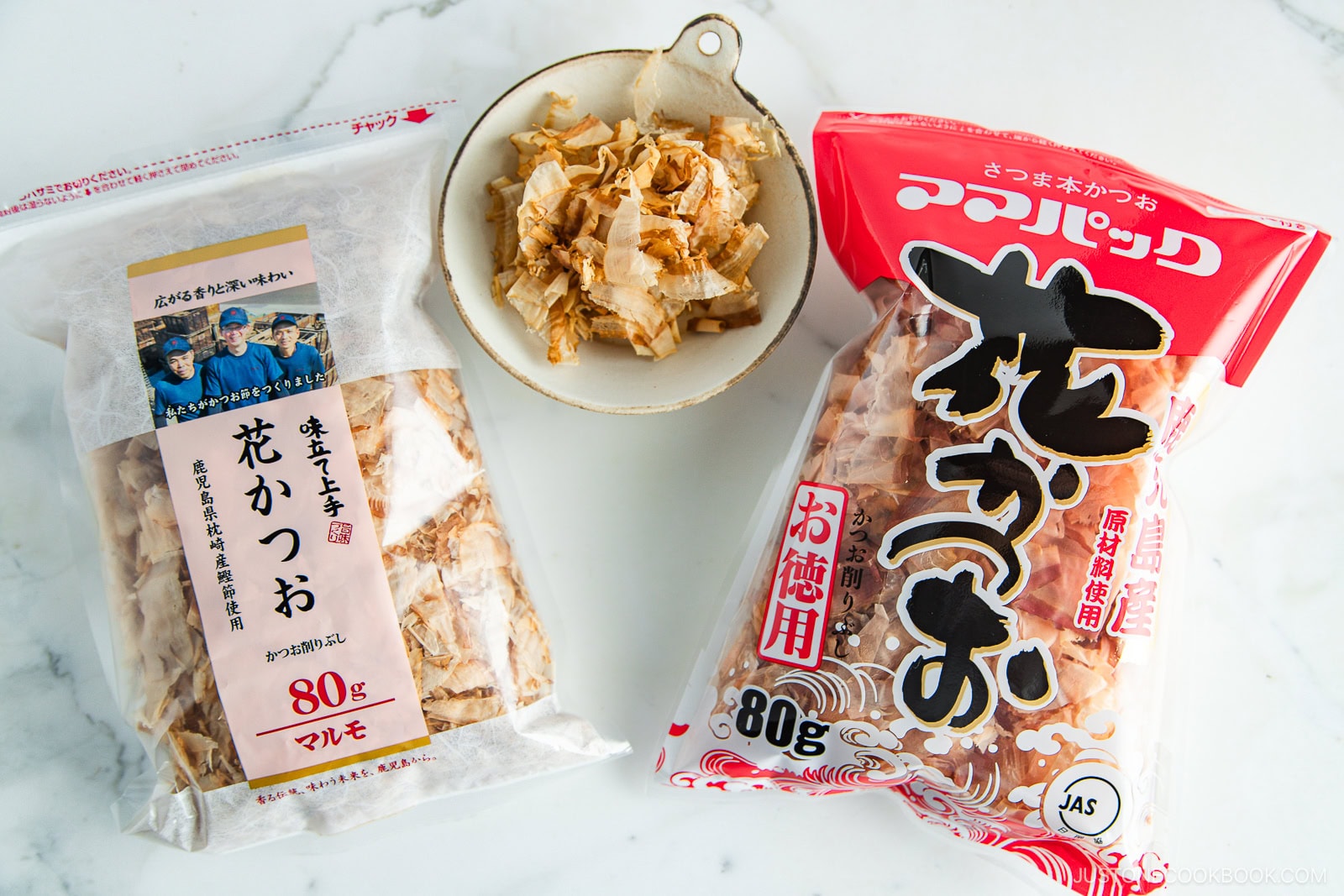


Six Different Types of Dashi
How do we decide which type to use for a particular dish? While pairings are often based on customary practice, there is no hard-and-fast rule.
1. Awase Dashi (合わせだし)
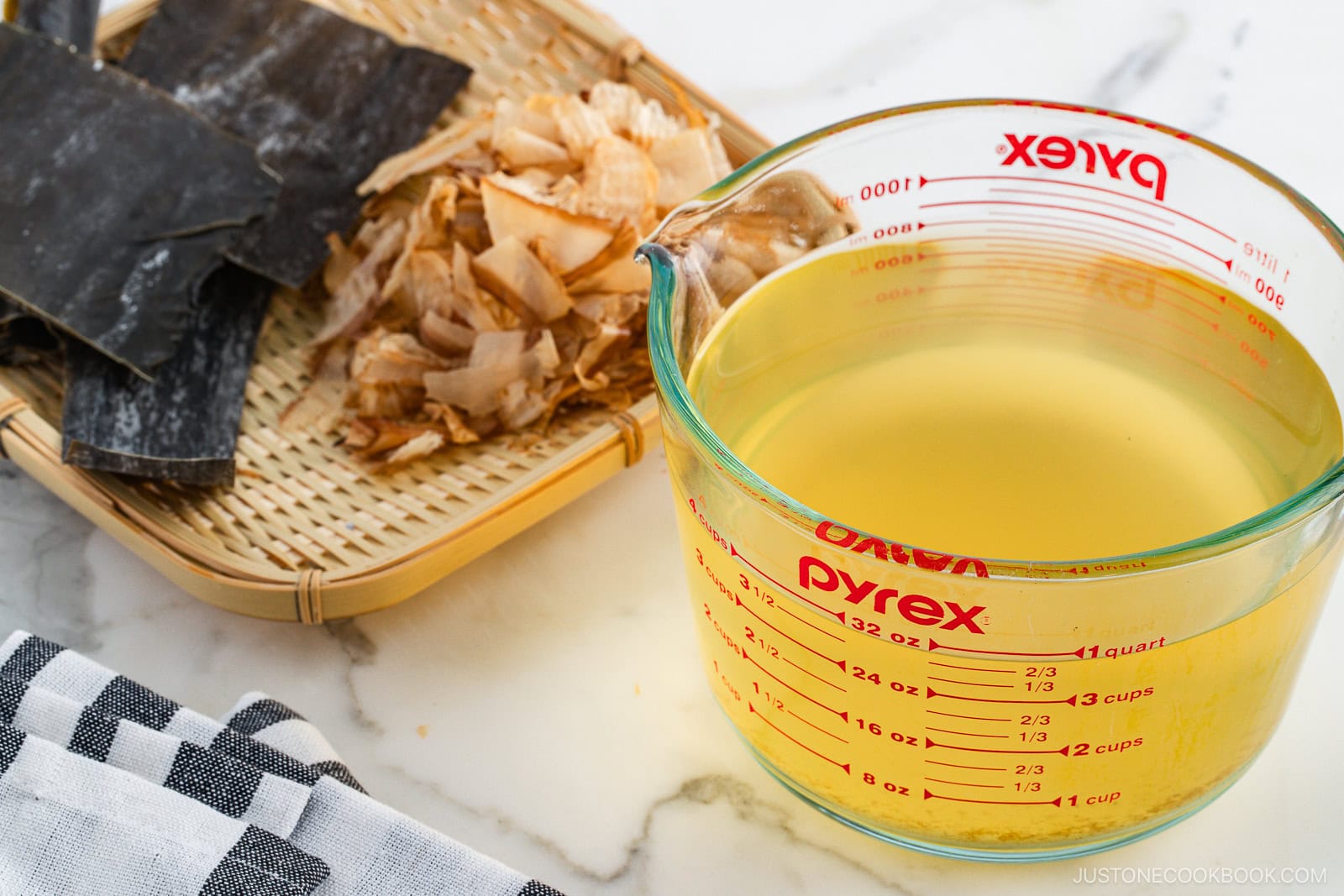
- uses dried kelp and bonito flakes
- means “combination” or “mixed”
- classic all-purpose stock; most commonly used
- my go-to soup stock for my recipes
Use it in:
- Homemade Miso Soup
- Donburi (rice bowls): Oyakodon
- Simmered dishes: Nikujaga, Chikuzenni
- Tamagoyaki
2. Kombu Dashi (昆布だし)
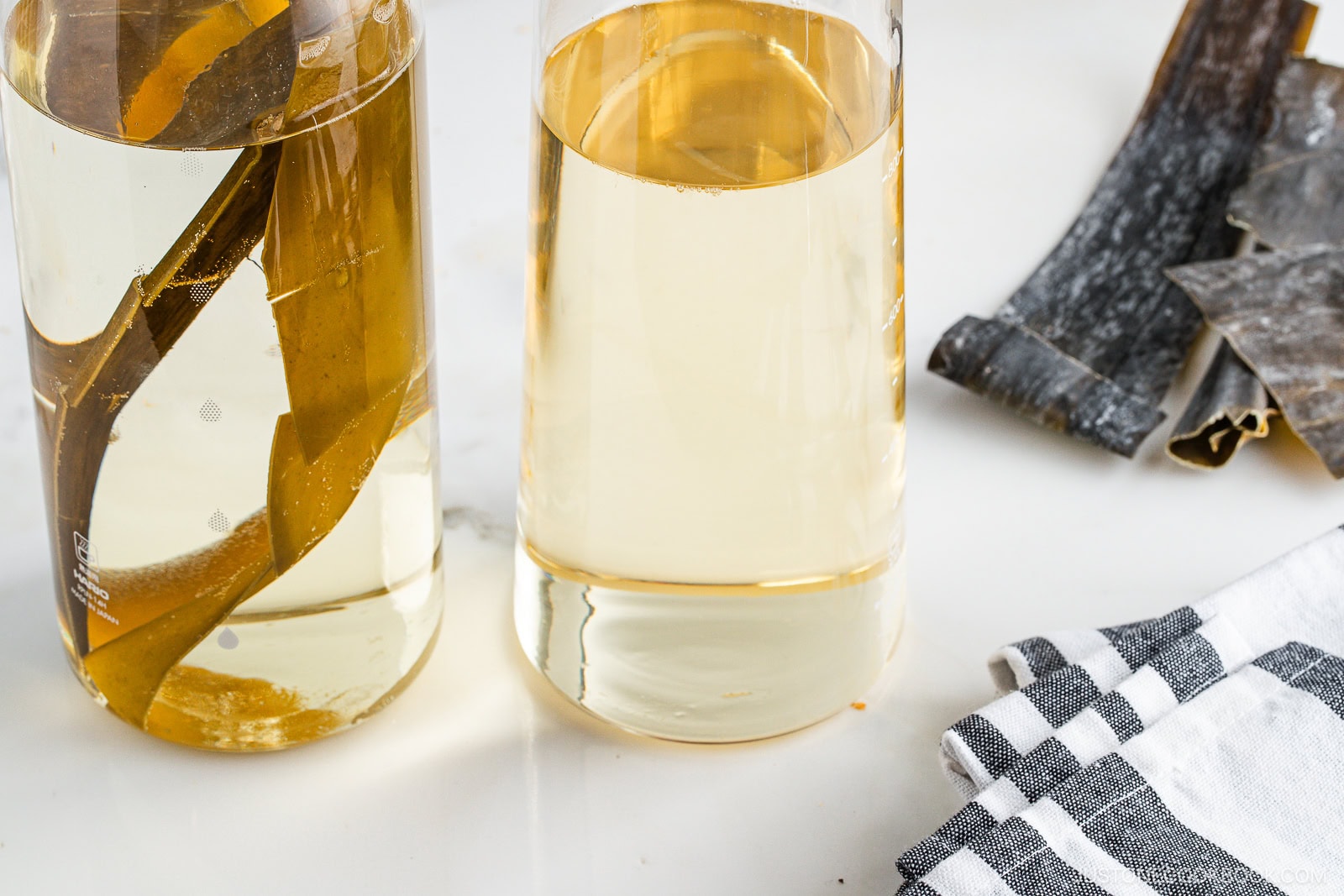
- uses dried kelp
- vegetarian/vegan
- gentle flavor
- for fish, seafood, or ingredients with a subtle taste
- the easiest stock to make
Use it in:
- Japanese Clear Clam Soup
- Hot Tofu (Yudofu)
- Shabu Shabu
3. Katsuo Dashi (鰹だし)
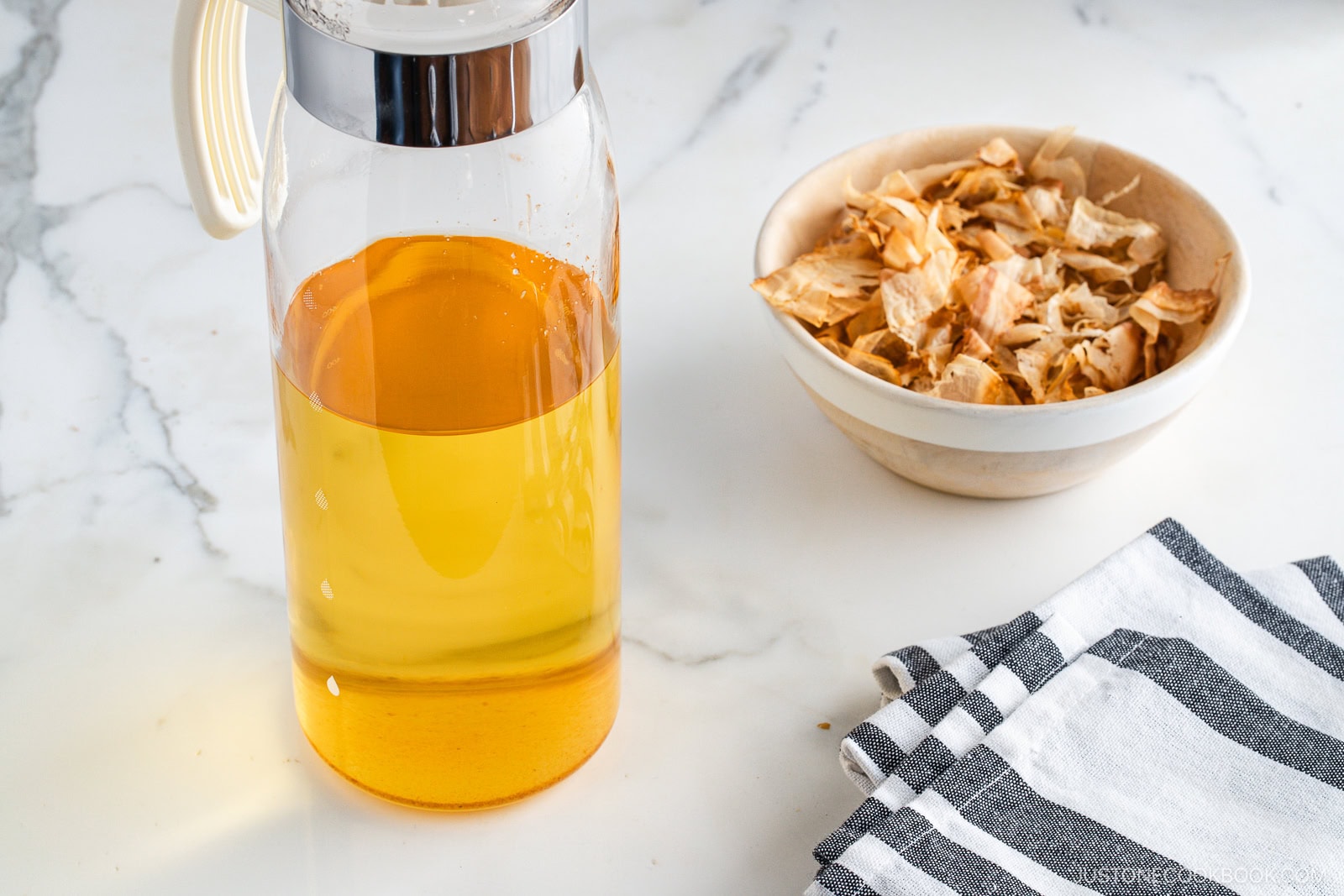
- uses dried bonito flakes
- aromatic, flavorful, and elegant
- good for simmered dishes, noodle soup dishes, and vegetables
- not recommended for fish dishes
Use it in:
4. Iriko Dashi (いりこだし)
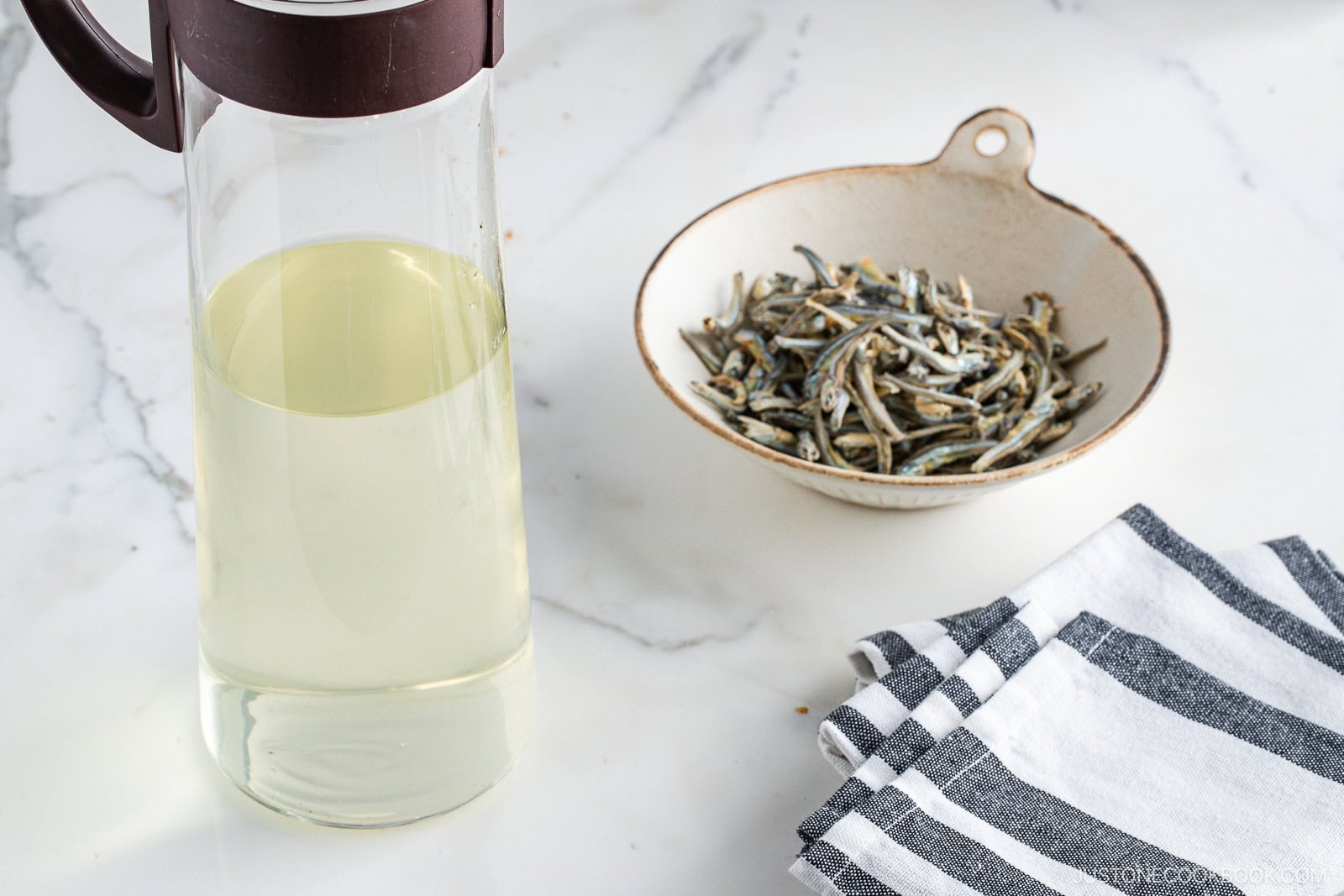
- uses dried baby anchovies/sardines; most affordable ingredient
- strong, fishy aroma and taste
- a savory stock that complements flavors or seasoning like soy sauce
- not recommended for fish dishes as the taste may be too strong
Use it in:
- Homemade Miso Soup
- Noodle soup: Curry Udon and Kitsune Udon
- Mentsuyu
- Donburi (rice bowls)
- Simmered dishes: Japanese Simmered Kabocha
5. Shiitake Dashi (干し椎茸の戻し汁; 椎茸だし)
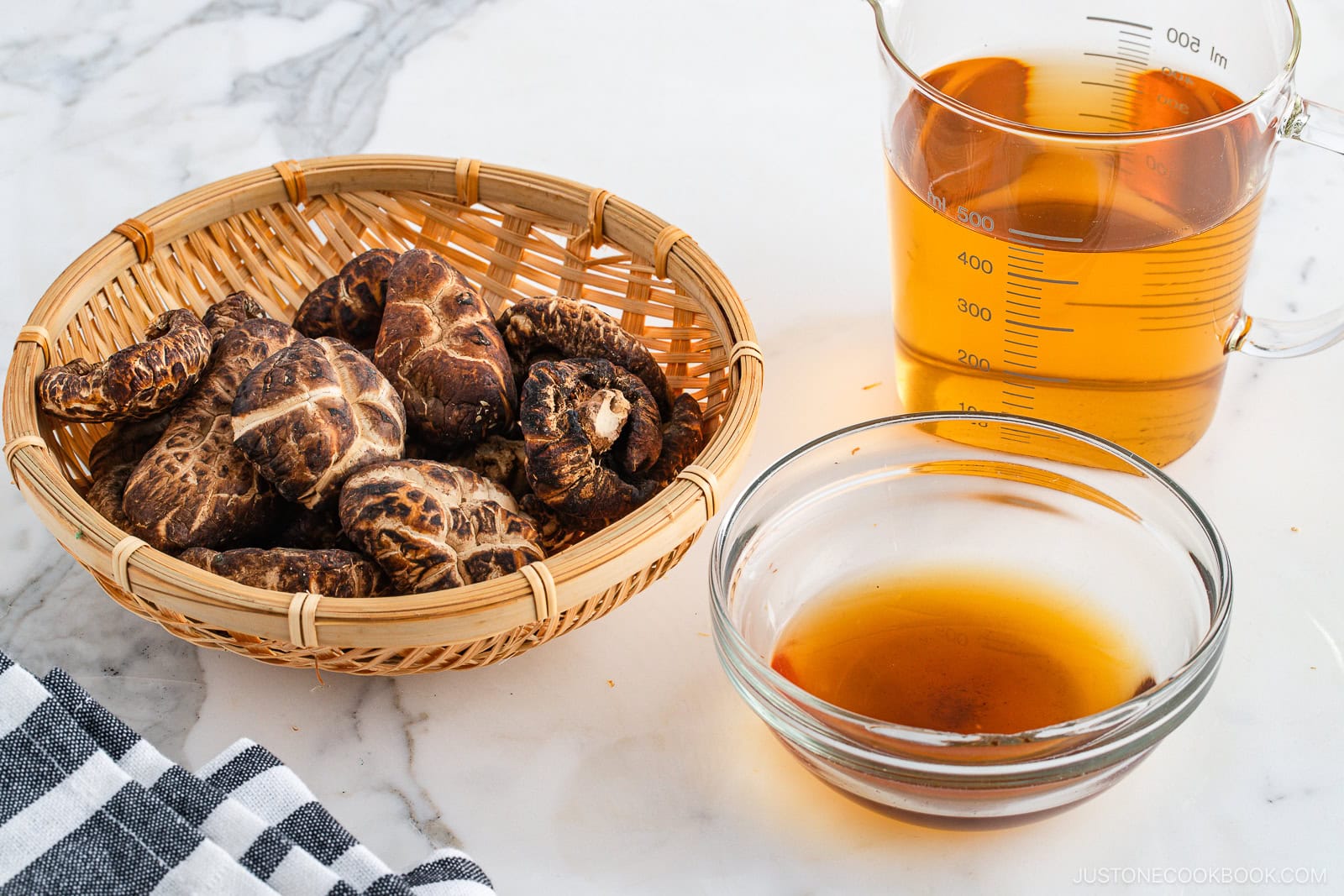
- byproduct of rehydrating dried shiitake mushrooms
- vegetarian/vegan
- rarely used on its own; usually combined with kombu stock or katsuo stock
Use it in:
- Chawanmushi
- Noodle soup dishes: Nabeyaki Udon
- Simmered dishes: Chikuzenni
- Chinese-style dishes: Harumaki, Stir-fried dishes
6. Vegan Dashi (精進だし)
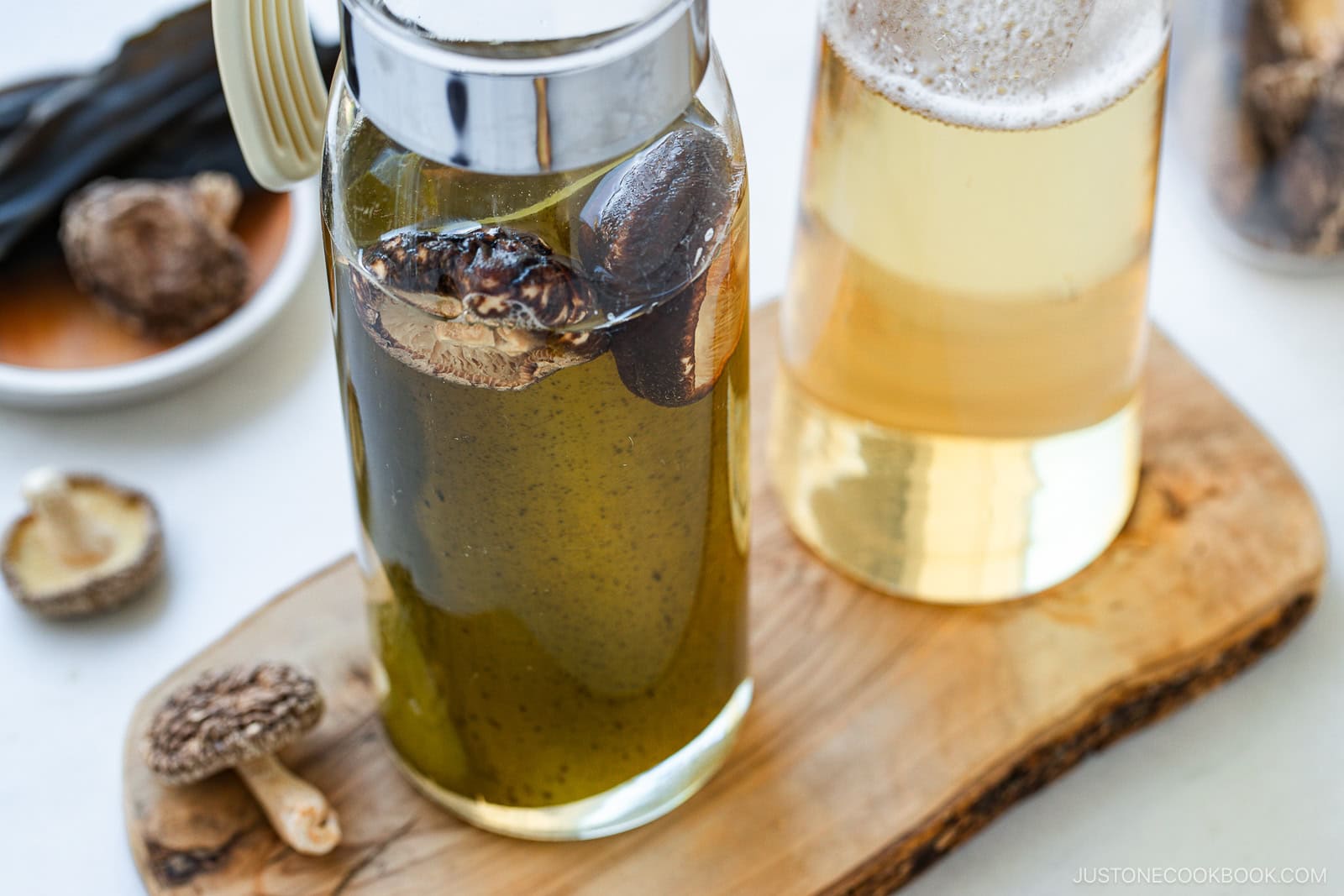
- uses dried kelp and the shiitake mushroom soaking liquid
- vegetarian/vegan
- more flavorful than kombu stock
Use it in:
- any recipe to make it friendly for vegans and vegetarians
Three Ways to Make Dashi
In just 5 to 20 minutes, you’ll have a stock to use in your favorite Japanese recipes.
Method 1: Dashi from Scratch
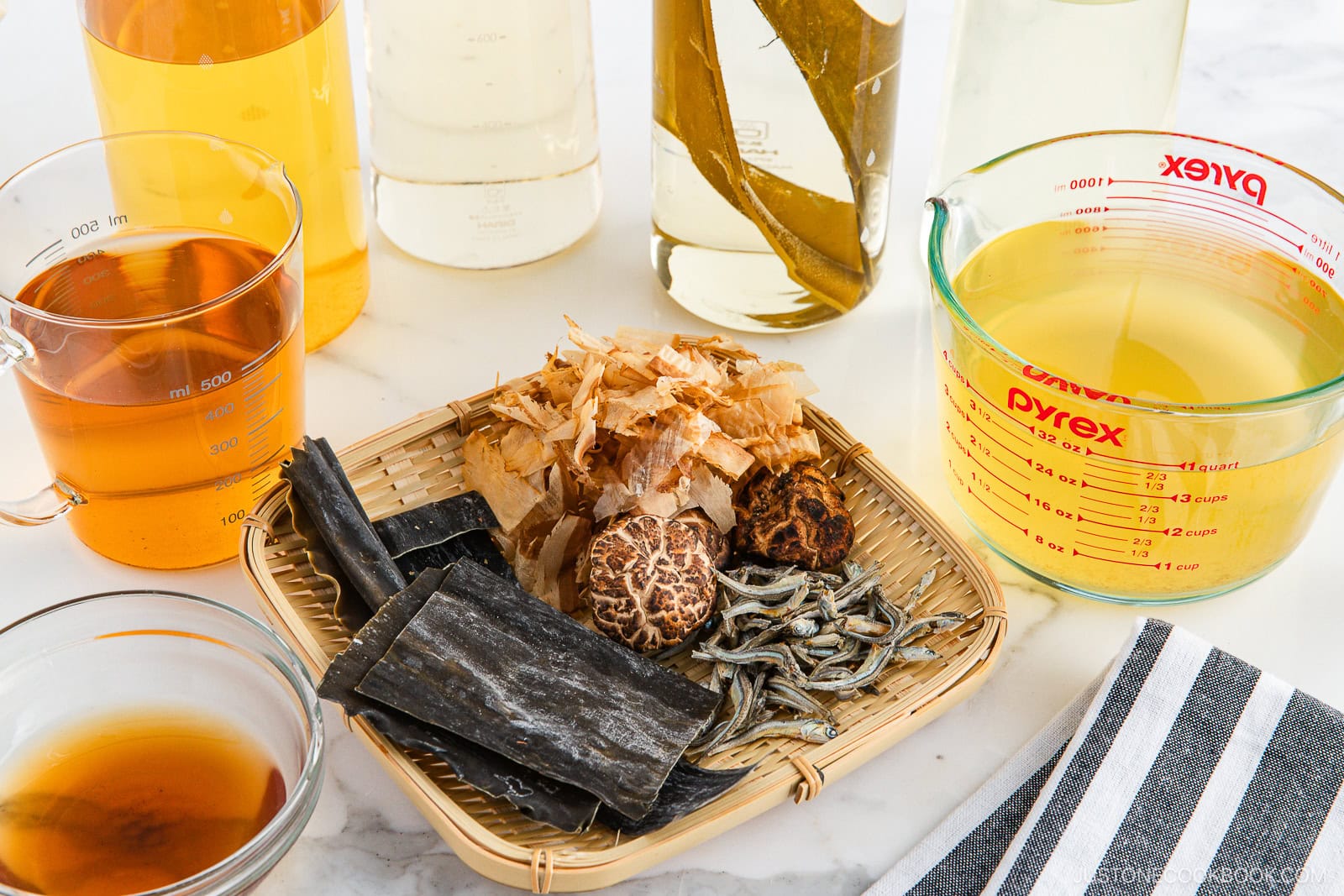
Cook time: 20 minutes
Pro: Best flavor
How to make: Add ingredient(s) to a pot of cold water and very slowly bring to a near boil. Steep and strain it. Use this method for:
Optional: Make it cold brew instead (most types)
Method 2: Dashi Packet
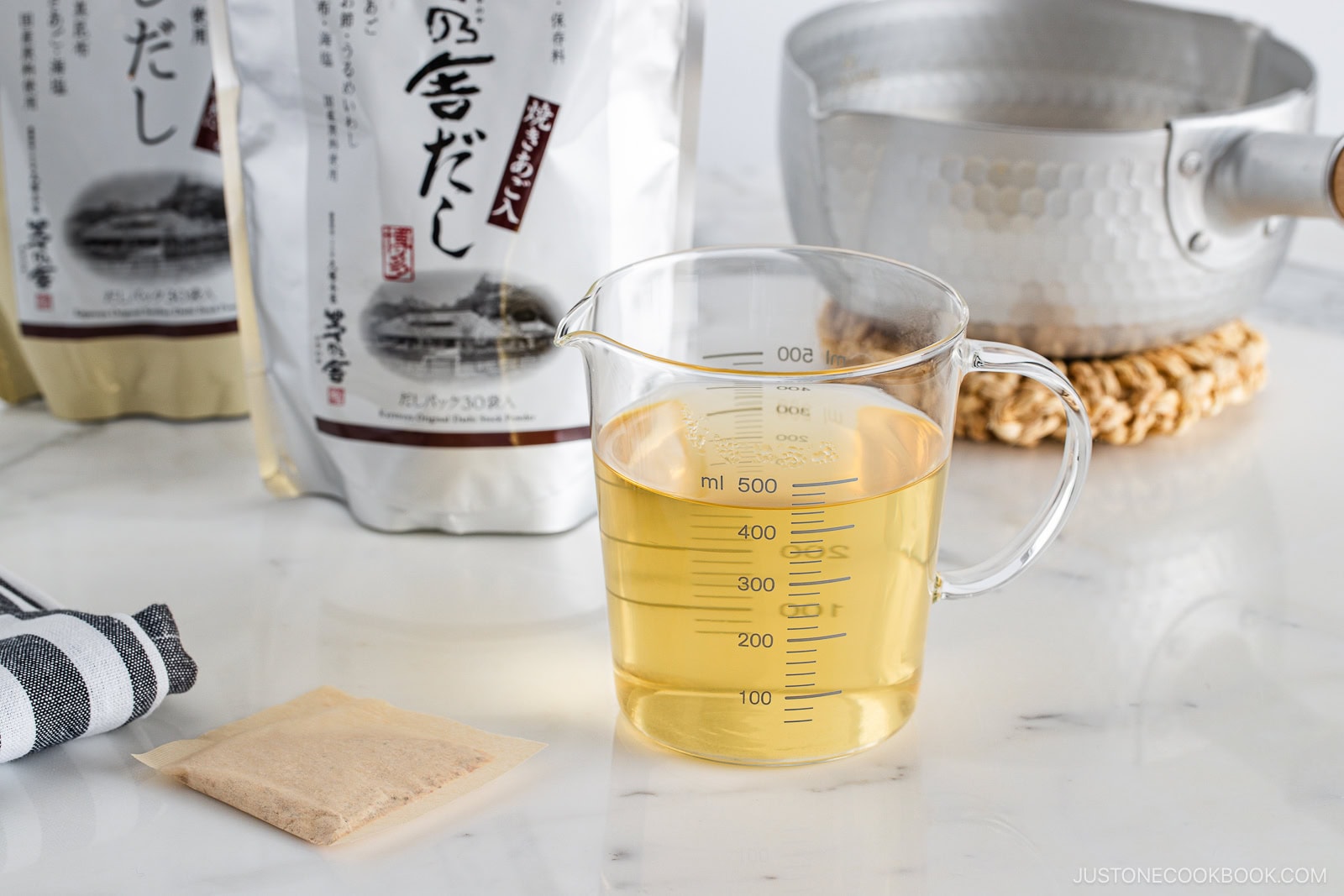
Cook time: 5 minutes
Pros: Very good flavor; convenient
How to make: Add to a pot of cold water and bring to a boil. Reduce the heat and simmer for 2–3 minutes. Discard the packet. [See my recipe]
Where to buy: Local Japanese grocery stores; hard to find at other Asian grocery stores.
My recommended brands: Kayanoya Dashi Packet (preservative-free, a bit pricey; find it on Amazon); or Yamaki Dashi Packet in Japanese grocery stores; or Yamasan Chaganju on Amazon.
Method 3: Dashi Powder
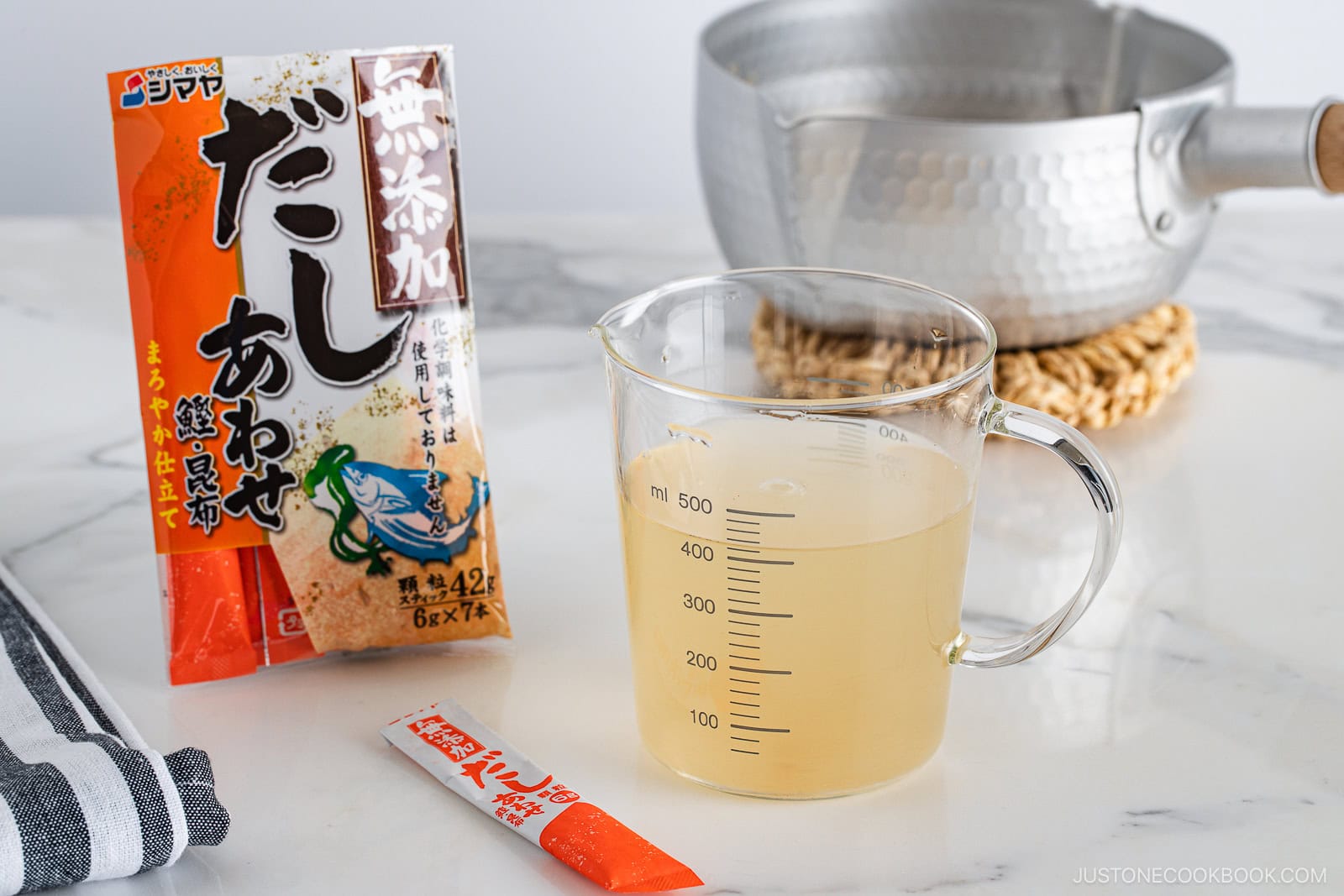
Cook time: 3 minutes
Pro: Fastest method (instant). Con: Least flavor; use only in a pinch
How to make: Dissolve the dashi granules into water and heat to a boil. [See my recipe]
Where to buy: Hondashi (ほんだし) and Dashinomoto (だしの素) are the most common brands. Find in Asian or American grocery stores.
My recommended brands: Shimaya awase dashi powder and Shimaya kombu dashi powder on Amazon and at Japanese grocery stores
Watch How to Make Dashi
Storage and Reheating Tips
To store: Transfer leftover stock to an airtight container and store it in the fridge for 3–4 days or freezer for up to 3 months.
To reheat: Simmer in a small pot over medium heat until warm, or microwave in 30-second intervals until fully reheated.
Frequently Asked Questions
There’s no good substitute. You can use chicken stock or broth, seafood broth, or mushroom broth, but the flavor will not be the same.
Editor’s Note: This post was originally published on January 4, 2011. It was updated with new images, video, and content in May 2019, when we opened this post’s comment section to the public. The post was republished with more helpful information on July 5, 2025.
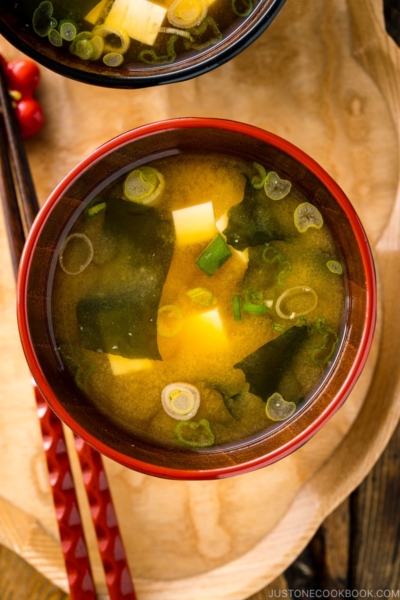
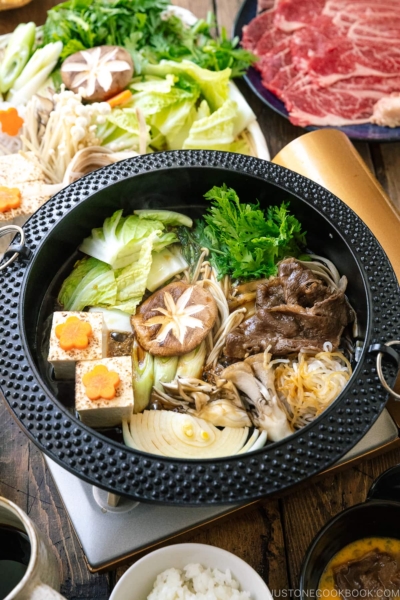
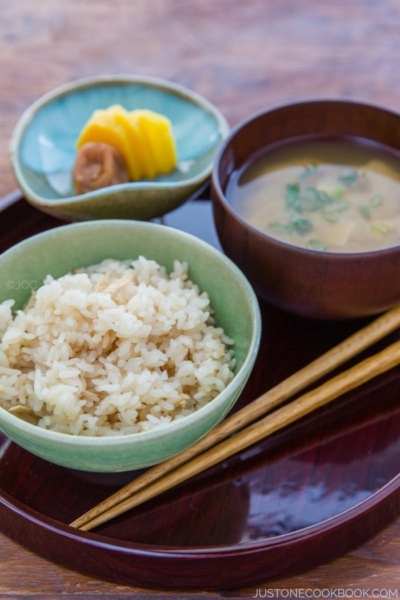





Where can I find those clear pitchers that you use to store your dashi in? I love them.
Hi Bridgett P! Thank you very much for reading Nami’s post!
Here is a link to a list of Nami’s kitchen tools. https://www.amazon.com/shop/justonecookbook?listId=JD39FUPH6SRN
There are two kinds of pitchers.
We hope this helps!
Hello,
I’m unclear which dashi to use/make when making agedashi? Which do you recommend? Thank you!
I just discovered you and your website and live it so far!!
Hi Stacy! Thank you very much for reading Nami’s post and trying her recipe!
For Agedashi Tofu or recipe called for Dashi, you can refer to Awase Dashi.
https://www.justonecookbook.com/agedashi-tofu-2/
We hope this helps!
Can shrimp used as dashi, like head or she’ll of shrimp?
Hi Ohkeshivar! Thank you very much for reading Nami’s post!
Yes, you can make broth from shrimp. But because it has a strong shrimp flavor, most Japanese dishes use Dashi/broth made from ingredients listed in this post.
We hope this helps!
Thank you Namiko san for teaching us the basics to great Japanese food! Appreciate the hard work that goes into your blog. 😊
Hi Kana! Thank you very much for reading Nami’s post and for your kind feedback!
We hope you enjoy many recipes from our site. Happy cooking!😊
I bought the Kayanoya packet from Amazon, it has a use by date of only 2 months from now. It’s unlikely I’ll be able to use it all up by then, can I store the unused packets in the freezer? Also, the dashi broth made from it has a noticeable fishy taste/smell, I don’t remember miso soup in Japanese restaurants having this. I will try using more water the next time.
Hi Martine, Yes, you can freeze the Dashi packets. We recommend placing it in an airtight container to keep away from the freezer smell.
As for Dashi taste, Kayanoya brand has own unique mixture of ingredient, and you may not like the blend of flavor. If that is the case, please feel free to try other brands and see if you better like that one. Using more water the next time is also good solusion.
We hope this helps!
Any advice on using liquid dashi like https://www.ninben.jp/products/shirodashi/? Does it need to be diluted, or do you just treat it like prepared stock?
Hi Kristen! Thank you very much for reading Nami’s post!
It looks like the liquid Dashi you mentioned is “Condensed soup stock,” according to their website, and Yes, you can use it as prepared stock.
You can dilute this liquid using the ratio showing on the link page. However, this stock contains sugar, soy sauce, and salt, so if you use this Dashi for Nami’s recipe as Dashi, please adjust the taste to your liking.
We hope this helps!
Thank you so much, Naomi! I was making Namiki’s Oyakodon recipe from your site, and the Ninben page didn’t specify ratios for that recipe so I wasn’t quite sure. Diluting the shirodashi and putting less soy sauce in the recipe worked great!
You are welcome, Kristen!
Thank you very much for trying Namiko’s Oyakodon recipe!😊
thank you for your recipes. Often ingredients are not available in my place, but you are able to give me ideas for substitution, you videos help a lot
Hi Xiule, We are so glad to hear you enjoyed Nami’s video and recipes!
Thank you very much for your kind feedback.
Hi Nami
Which type dashi best for chawan moshi?
Hi Anton, Thank you very much for trying Nami’s recipe!
Nami prefers Katsuo dashi, Shiitake dashi, or a mix of Katsuo and shiitake dashi (see how to mix them in the recipe) for Chawanmushi.
https://www.justonecookbook.com/chawanmushi-savory-steamed-egg-custard/
We hope this helps!
I noticed that there are dashi concentrates in bottles available at supermarkets. I was wondering if you have had experience using these and what you think of them, since I don’t see then listed on this site. Do you recommend any? Or are the packet/powder ones better?
Hi Vincent, Thank you for your question. We had used them before. However, they contained many ingredients to keep them fresh for a long time, and we prefer not to use them.
We recommend using a Dashi packet or powder listed in this post. We hope this helps!
I’ve been making a “rustic” dashi; I leave the bonito flakes in the broth…
So long as the bonito is crushed to nearly a powder, it’s ok. Large flakes stick to the back of your throat.. Eating something with it usually dispells that problem.
Hi Matthew, Thank you for sharing your cooking experience with us!
Hi, I love your website and have made many of your recipes. However, I live in North West Western Australia and have to order my ingredients online from Perth (1800kms away). I can only get the Dashi in powder form and this recipe says 2 cups, but as the Dashi powder packet is written in Japanese I am not sure how to mix it. How much Dashi powder to 1 cup of stock??? Thank you…
Hi Janice, Most Dashi powder use 1 tsp (3g) to 2 cups of water. Here is Nami’s post link with instructions. https://www.justonecookbook.com/dashi-powder/
We hope this helps and you can enjoy making many Japanese dishes soon!
I very much want to learn to make Dashi, thank you for this page. I have questions.
1. If I want to make a combination dashi, say with all four flavor types – kombu, katsuobushi, shitake and iriko, would I make four different dashis and combine them or make one with all the ingredients.
2. For a combination dashi would I used the total water for ALL the recipes or use a smaller amount of water to make for a stronger flavor?
Hi The Peter,
We called it Awase Dashi (合わせだし), and it is made from a combination of kombu (dried kelp) and katsuobushi (dried bonito flakes). Awase (合わせ) means “to combine,” “mixed,” or “together.” Normally, Awase Dashi is two ingredients.
If you are making all four flavors of dashi, you have to think about the timing to add each dashi ingredient because items like kombu can’t be a boil, but Iriko has to boil, Katusobushi has to add at boiling point and take off the pot from heat to extract the umami, etc.
Here is the link for Awase Dashi: https://www.justonecookbook.com/how-to-make-dashi/
And you can see how two steps work to extract the umami from Kombu and Katsuobushi.
As for combination dashi, you may use a smaller amount of water for a stronger flavor. It’s up to your preference.😉
We hope this is helpful.
Thank you. It was very helpful. One more question – is there a use for the iriko after the dashi hs been made?
Hi The Petey,
It is our pleasure to answer your questions.☺️
As for the leftover Iriko, you can season it with sweet soy sauce flavors just like how we make Tazukuri (Candied Sardine).
https://www.justonecookbook.com/tazukuri-candied-sardines/
We hope this helps!
Hi
Thanks for all this info. I have a few questions:
1) Is there any benefit in taste if one cold brews the kombu dashi for more than 3hrs?
2) Can you also cold brew the katsuobushi dashi? Or does that one need to be hot?
3) For awase dashi, I read that you need to do the ichiban dashi first, then do the second brew. Why should not do it together/ at the same time? How does this enhance the flavor?
Thanks for all your help, looking forward to hearing from you!
Hi Kate,
Very good questions!
1) You can cold brew the Kombu dashi for up to 8 hours to maximize the Umami from Kombu. But please do not leave Kombu for more than 12 hours to avoid too much Alginic acid from the Kombu in the Dashi. It will change the color of the Dashi and make the Dashi slimy as well.
2) We don’t recommend it. The Umami from Katsuobushi is hard to extract in cold water. So please follow Nami’s instructions to enjoy the best balance of Umami from Katsuobushi.
3) The Awase Dashi is made from Kombu and Katsuobushi. As I mentioned, we can’t use the cold brew method for Katsuobushi. How about using hot water? The Kombu has to be in cool water and then gently bring out the flavor by heating up the water (but do not boil), but Katsuobushi needs to start from warm water (not boiling water) to extract the good Umami, so we do two steps.
I hope this is helpful.
When other materials are not available, is it possible to use msg or salt as a substitute for dashi? If yes how much should I add for 1 tbsp of dashi?
Hi Judy! Dashi is something that’s hard to replace with something else (such as MSG or salt). When you feel the “authentic” flavor of Japanese food, it’s usually dashi that leaves the flavor and fragrance. Let’s say when you cook meat, potato, carrot, onion as a stew, dashi is the only ingredient to make it a Japanese dish (this is the “Nikujaga” recipe). If you add salt or MSG, it won’t turn into a Japanese dish. It will still stay more like just a regular any non-Japanese dish… Hope I’m making sense!
Can Dashi stock, once made, be stored for any length of time? I enjoy making my own stock and the family loves it. Thanks.
Hi Sherman! Usually 5 days for the best quality, but you can push it to 7 days at most. I wrote the storage information in each dashi recipe. 🙂